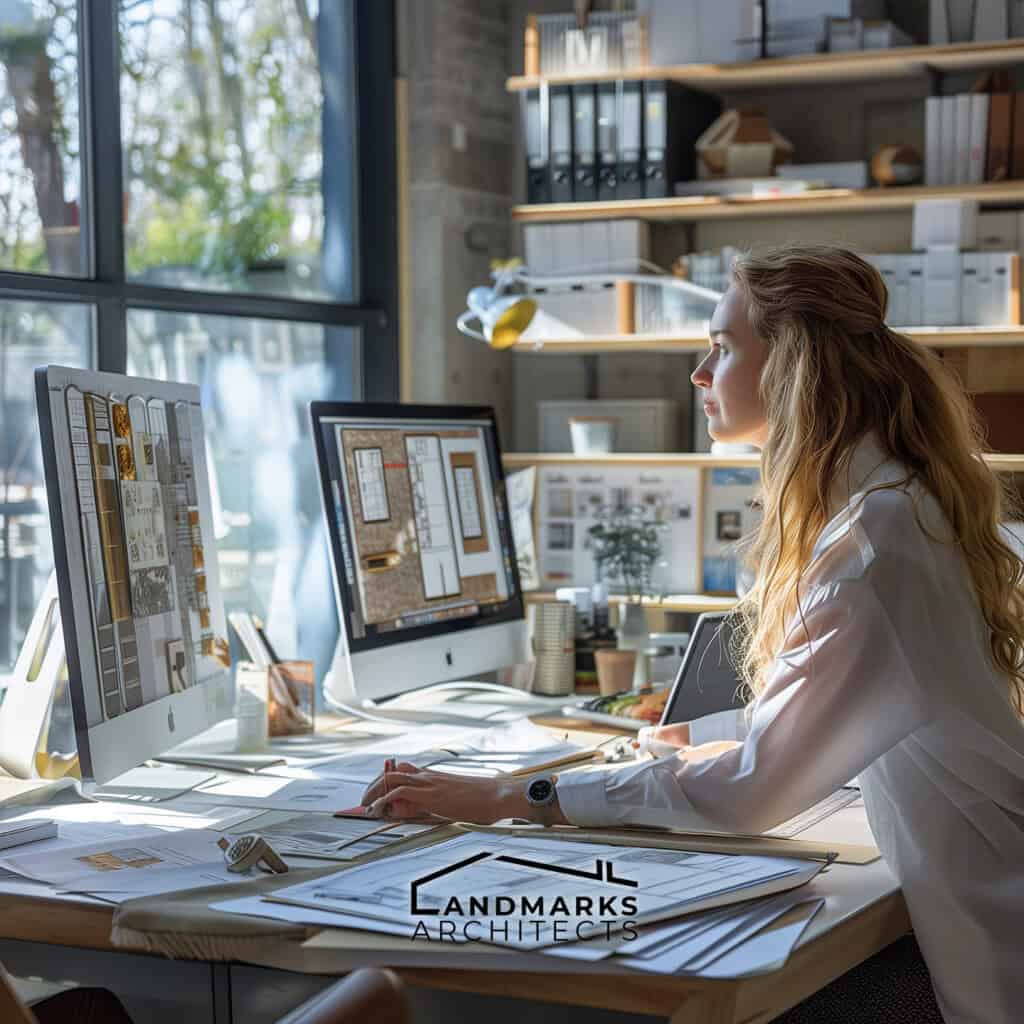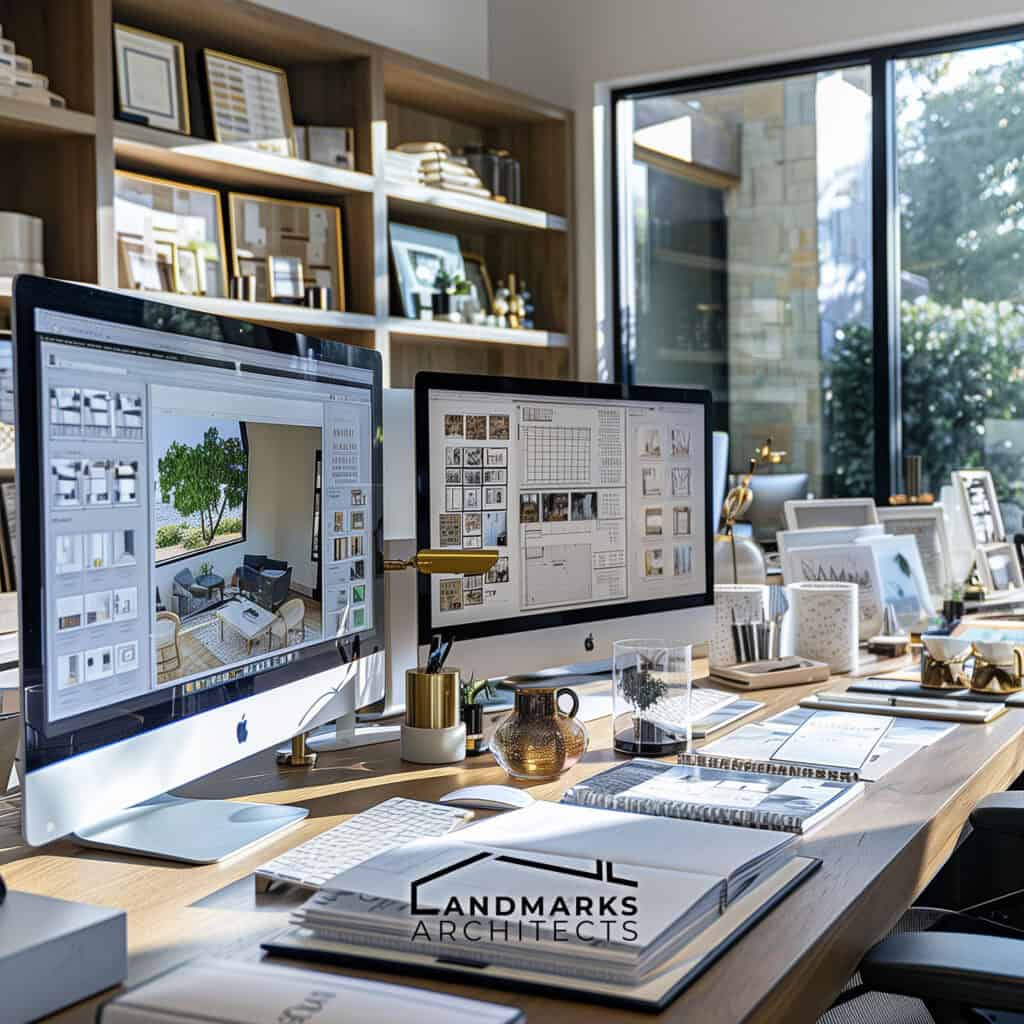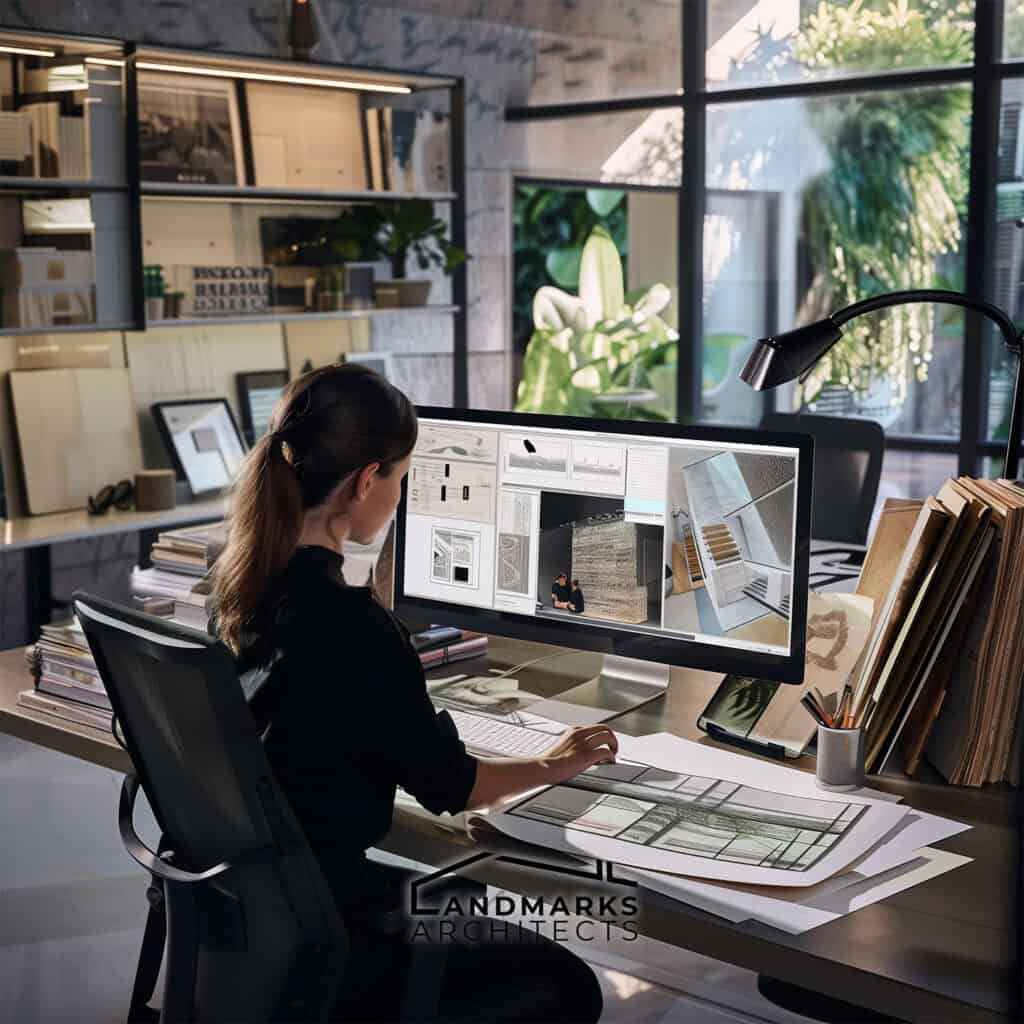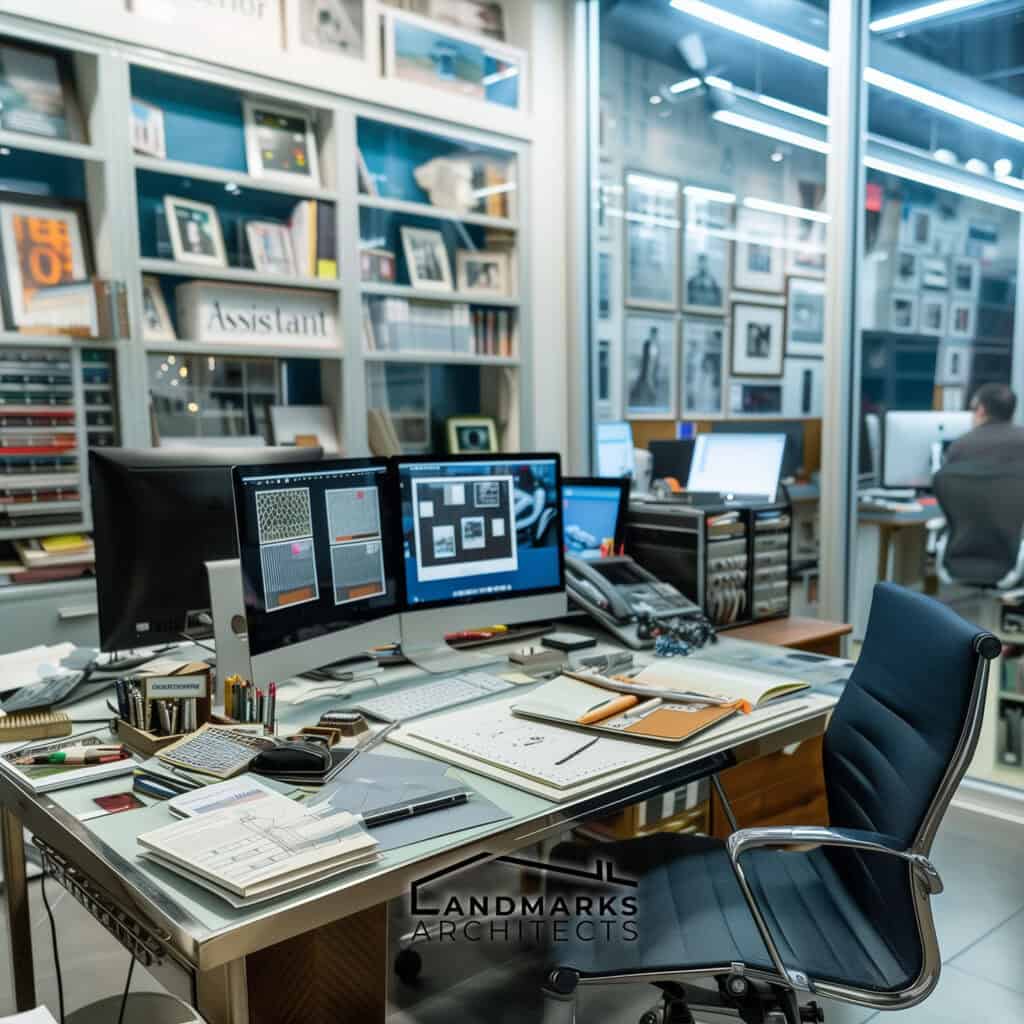


Want to start a career in interior design? Becoming an interior design assistant could be your perfect entry into this creative field.
You don’t have to navigate it alone. With the right skills and support, you can thrive and advance in this exciting career.
At Landmarks Architects, we’re here to help you succeed with our industry experience.
In this article, we’ll cover:
- Top 5 Key Skills: Technical know-how, organization, communication, attention to detail, and creativity.
- Career Path: What you need to start, how to develop your career and growth opportunities.
Ready to start? Read on to learn how to build a successful career as an interior design assistant.
Master these skills and know your career options. You’ll then succeed in interior design.
Top 5 Skills for Success
Success as an interior design assistant depends on a blend of specific skills. The following skills are critical for anyone looking to thrive in this role. They include technical knowledge, organizational skills, and effective communication. They must have a keen eye for detail and strong creativity.
1. Technical Skill

Technical skills are key for interior design assistants. Knowing how to use design software like AutoCAD is essential. This software helps make accurate floor plans and design layouts. Understanding construction methods and materials is also important.
It helps assistants support the interior designer well. Knowing furniture specifications improves project work. These skills make it easier to collaborate with interior designers and ensure projects meet the right standards.
2. Organizational Abilities

Strong organizational skills help interior design assistants handle many tasks at once. They manage schedules, materials, and project responsibilities. Being detail-oriented helps them keep track of deadlines and manage workflows well.
Good organization lets them support the interior designer without missing important details. It also helps build good relationships with suppliers and contractors, which is vital for finishing projects on time.
See Also Architecture Animation: 6 Reasons for Animation Use
3. Communication Skills

Effective communication skills are vital in the interior design field. Design assistants must share ideas with designers and clients. They should also be able to communicate any project updates efficiently.
This avoids misunderstandings and aligns everyone with the project goals. Strong verbal and written skills are necessary for preparing and presenting materials. They also aid in facilitating meetings and assisting in marketing efforts.
4. Attention to Detail

Attention to detail is critical in interior design. It ensures that every project aspect is considered, from color palettes to materials. A detail-oriented assistant can spot potential issues before they escalate.
This skill is particularly important when reviewing plans and drawings. It helps maintain quality standards and ensures that the outcome meets client expectations. Many tasks require a careful review of specifications, making this skill invaluable.
5. Creativity and Design Insight

Creativity and design insight set successful interior design assistants apart. They need to contribute innovative ideas to projects while supporting the lead designer’s vision. An understanding of current design trends enhances their contributions.
Creative thinking helps in problem-solving and finding effective solutions during project development. This skill not only aids in design development but also in assisting sales and marketing efforts by bringing fresh concepts to the table.
See Also Best Laptop for Architecture: 6 Top Laptops in 2024
Career Path and Advancement
The job of an interior design assistant has many growth opportunities. To succeed in this field, know the entry-level requirements, career options, and ways to grow.
1. Entry-Level Requirements

Candidates usually need a bachelor’s degree in interior design or a related field to become an Interior Design Assistant. This educational background provides foundational knowledge in design principles and practices.
Additionally, employers often seek self-starters who can collaborate easily with designers and clients. A valid driver’s license may be necessary, especially when visiting job sites or meeting with contractors. Candidates must show their skills in their resume and cover letter.
They should highlight relevant projects, internships, or part-time jobs to demonstrate their ability to support the interior designer effectively.
2. Career Development

Career development as an interior design assistant involves gaining skills and experience. Helping lead designers with different projects is key. Responsibilities might include making layouts, talking with vendors, or preparing design presentations.
Knowing design software like AutoCAD is important. Building a network with contractors and architects can lead to new opportunities. Design workshops or extra certifications can boost a design assistant’s appeal to employers and improve their ability to support the interior designer effectively.
3. Professional Growth

Interior design assistants can move up to roles like Interior Designer or Design Principal. To advance, they need to take on bigger tasks and manage more complex projects.
As they gain experience, they might work in marketing and sales at an interior design firm. Being proactive and creative can help them stand out. Staying committed and continuing to learn is important for long-term success.
Interior Design Assistant jobs: A Recap
To succeed as an interior design assistant, focus on these key skills: technical knowledge, organization, communication, attention to detail, and creativity. Start with a degree in interior design and gain experience through projects and networking.
By developing these skills and staying proactive, you can advance to higher roles and thrive in this exciting career.










